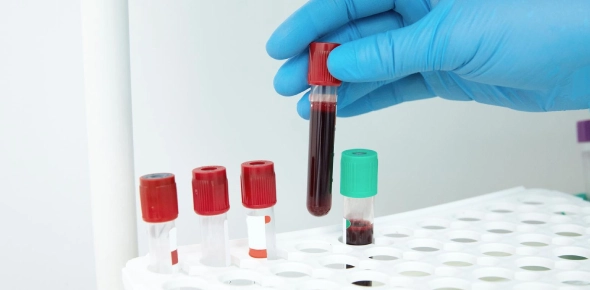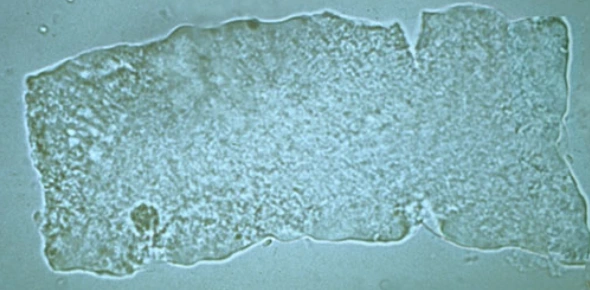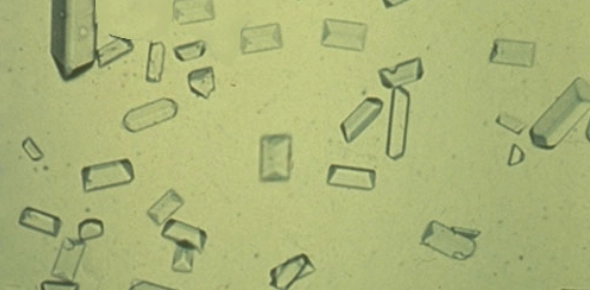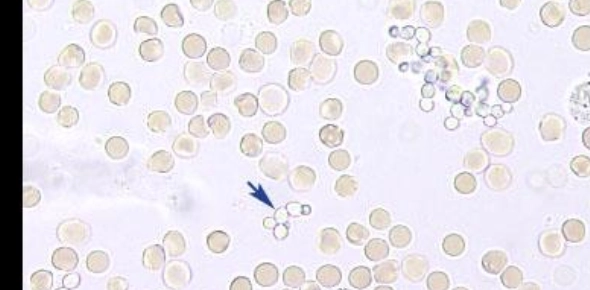Competency In Clinical Biochemistry! Trivia Quiz

There is only one answer to each question.
- 1.
What type of sample can be used to test for protein?
- A.
CSF
- B.
Urine
- C.
Serum / Plasma
- D.
All of the above
Correct Answer
D. All of the aboveExplanation
All of the given samples, CSF, urine, and serum/plasma, can be used to test for protein. CSF (cerebrospinal fluid) is a clear fluid that surrounds the brain and spinal cord, and it can be analyzed to detect protein abnormalities related to neurological disorders. Urine can also be tested for protein levels, which can indicate kidney damage or other urinary tract issues. Serum and plasma, which are components of blood, can be used to measure protein levels in the body, providing information about various health conditions. Therefore, all of these samples are suitable for protein testing.Rate this question:
-
- 2.
In a hemolytic crisis, bilirubin levels are________________.
- A.
Normal
- B.
Increased
- C.
Decreased
- D.
Unchanged
Correct Answer
B. IncreasedExplanation
In a hemolytic crisis, there is an increased breakdown of red blood cells, leading to an excessive release of bilirubin into the bloodstream. Bilirubin is a byproduct of the breakdown of heme in red blood cells and is usually processed by the liver and excreted in bile. However, in a hemolytic crisis, the liver may not be able to keep up with the increased bilirubin production, resulting in elevated levels of bilirubin in the blood. Therefore, the correct answer is increased.Rate this question:
-
- 3.
Faeces gets its brown pigmentation from _________________.
- A.
Stecobilirubin
- B.
Stercobilin
- C.
Stecobilin
- D.
Stercobilinogen
Correct Answer
B. StercobilinExplanation
Faeces gets its brown pigmentation from stercobilin. Stercobilin is a breakdown product of bilirubin, which is formed when red blood cells are broken down in the liver. Bilirubin is then converted into stercobilin in the intestines and gives the feces its characteristic brown color.Rate this question:
-
- 4.
ALP is elevated in the following disorder?
- A.
Addison's Disease
- B.
Paget's Disease
- C.
Scleroderma
- D.
Diabetes Insipidus
Correct Answer
B. Paget's DiseaseExplanation
Paget's disease is a disorder characterized by abnormal bone remodeling, leading to enlarged and weakened bones. This condition is associated with an elevated level of alkaline phosphatase (ALP) in the blood. ALP is an enzyme found in various tissues, including bones, liver, and intestines. In Paget's disease, the abnormal bone turnover causes an increase in ALP production, resulting in elevated levels of ALP in the blood. Therefore, Paget's disease is the disorder in which ALP is elevated.Rate this question:
-
- 5.
Which of the following enzymes is most specific for diagnosis of a Myocardial Infarction?
- A.
AST
- B.
CK
- C.
CK-MB
- D.
Troponin
Correct Answer
D. TroponinExplanation
Troponin is the most specific enzyme for the diagnosis of a Myocardial Infarction. Troponin is a protein found in cardiac muscle cells, and its release into the bloodstream is a specific indicator of damage to the heart muscle. Elevated levels of troponin in the blood indicate myocardial injury, making it a highly reliable marker for diagnosing a heart attack. AST (aspartate aminotransferase), CK (creatine kinase), and CK-MB (creatine kinase-MB) are also enzymes that can be elevated in myocardial infarction, but troponin is considered the most specific and sensitive marker for this condition.Rate this question:
-
- 6.
Hyperkalemia can cause all of the following EXCEPT.
- A.
Muscle weakness
- B.
Decreased Vitamin D absorption
- C.
Heart arrhythmias
- D.
Neuromuscular symptoms
Correct Answer
B. Decreased Vitamin D absorptionExplanation
Hyperkalemia is a condition characterized by high levels of potassium in the blood. It can cause various symptoms and complications, including muscle weakness, heart arrhythmias, and neuromuscular symptoms. However, it does not directly affect the absorption of Vitamin D. Therefore, decreased Vitamin D absorption is not a consequence of hyperkalemia.Rate this question:
-
- 7.
Which analyte will be falsely elevated due to hemolysis?
- A.
Glucose
- B.
LDH
- C.
Calcium
- D.
LDL
Correct Answer
B. LDHExplanation
LDH (lactate dehydrogenase) is an enzyme found in many tissues, including red blood cells. Hemolysis refers to the breakdown of red blood cells, which can release LDH into the bloodstream, leading to falsely elevated levels. Therefore, LDH would be the analyte that is falsely elevated due to hemolysis.Rate this question:
-
- 8.
What is shown in picture above?
- A.
Hyaline cast
- B.
Waxy cast
- C.
Granular cast
- D.
Epithelial cell
Correct Answer
B. Waxy castExplanation
The correct answer is "Waxy cast". In the picture above, there is a structure that appears to be a cast, which is a cylindrical structure formed in the renal tubules. The cast has a smooth, homogeneous appearance and a pale color, which is characteristic of waxy casts. Waxy casts are often seen in chronic kidney disease and indicate severe damage to the renal tubules.Rate this question:
-
- 9.
The pH of the urine specimen was 8.0. What is the likely crystal seen above?
- A.
Amorphous phosphate
- B.
Uric acid
- C.
Triple phosphate
- D.
Tyrosine
Correct Answer
C. Triple phosphateExplanation
The pH of the urine specimen is 8.0, which indicates alkaline urine. Triple phosphate crystals are commonly found in alkaline urine and are formed by the precipitation of magnesium ammonium phosphate. Therefore, the likely crystal seen above is triple phosphate.Rate this question:
-
- 10.
What is the crystal shown in the picture above?
- A.
Calcium oxalate
- B.
Uric acid
- C.
Triple phosphate
- D.
Tyrosine
Correct Answer
A. Calcium oxalateExplanation
The crystal shown in the picture above is identified as calcium oxalate. This conclusion can be made based on the visual characteristics of the crystal in the image. Calcium oxalate crystals typically have a distinctive shape and appearance, which matches the crystal shown. Additionally, calcium oxalate crystals are commonly found in urine and can be associated with certain medical conditions such as kidney stones. Therefore, considering the context of the question, calcium oxalate is the most appropriate answer.Rate this question:
-
- 11.
Identify the structure indicated above. Biochemical test result: pH: 6.5 RBC: 3+ Leukocyte esterase: Neg Glucose: Neg Protein: Trace Bilirubin: Neg Nitrite: Neg
- A.
RBCs
- B.
WBCs
- C.
Yeasts
- D.
Hyphae
Correct Answer
C. YeastsExplanation
The given biochemical test results indicate the presence of yeasts. The pH level of 6.5, along with the trace amount of protein, suggests the growth of yeasts. The absence of leukocyte esterase, glucose, bilirubin, and nitrite further supports this conclusion. RBCs and WBCs are not indicated in the test results, and hyphae are not mentioned at all. Therefore, the correct answer is yeasts.Rate this question:
-
Quiz Review Timeline +
Our quizzes are rigorously reviewed, monitored and continuously updated by our expert board to maintain accuracy, relevance, and timeliness.
-
Current Version
-
Nov 09, 2023Quiz Edited by
ProProfs Editorial Team -
Apr 05, 2010Quiz Created by
Johnson_1234
- Atom Quizzes
- Atomic Theory Quizzes
- Chemical Bonding Quizzes
- Chemical Compound Quizzes
- Chemical Element Quizzes
- Chemical Reaction Quizzes
- Chemistry Practice Quizzes
- Clinical Chemistry Quizzes
- Electrolysis Quizzes
- Functional Group Quizzes
- Gas Quizzes
- General Chemistry Quizzes
- IBSL Chemistry Quizzes
- Medicinal Chemistry Quizzes
- Molecule Quizzes
- Periodic Table Quizzes
- Rate Of Reaction Quizzes
- Reaction Quizzes
- Soap Quizzes
- Solution And Mixture Quizzes
- State Of Matter Quizzes
- Stoichiometry Quizzes
 Back to top
Back to top







